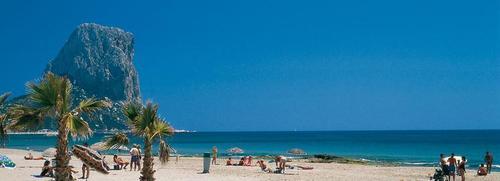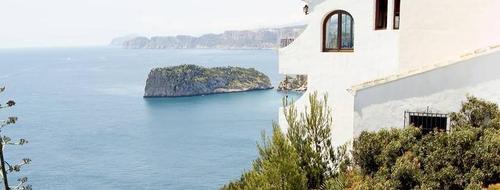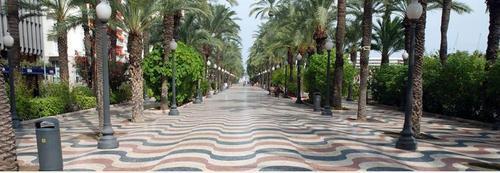Costa Blanca takes up the stretch of Mediterranean coast that corresponds to the province of Alicante, a great example of what is known as Mediterranean landscape.

The traveller can choose any part of this coastline, from the liveliest, most cosmopolitan stretch to areas that still maintain a rural feel. Wherever you decide to go, try to visit the neighbouring regions where you can discover the beautiful Mediterranean landscape.
The horizons of the Costa Blanca feature many different types of attractions ranging from the valleys, where the memory of its Moorish past is kept alive in its terraced vegetable gardens, to the palm trees. The climate is also variable. The temperature is generally mild – the annual average being slightly higher than 17ºC – with little rainfall, and in the northern mountains in the area, the rainfall is logically higher than that registered in the lowland surrounding Elche and Orihuela. The combination of almond tree fields, vineyards, orchards and magnificent palm trees creates a type of vegetation that is unique in Europe.

They became a symbol of the global housing market crash, unsold, half-built, lining the Mediterranean like skeletal relics of a bygone, more prosperous age.
But villas and apartments on the Spanish Costas are suddenly hot property again as Britain’s second-home buyers rediscover the attractions of life in southern Spain.
Fresh from a chilly, dismal winter, drawn by falling prices and apparently undaunted by the low sterling-euro exchange rate, a new generation of would-be buyers has descended on Spain, according to the Spanish division of Taylor Wimpey.

Typical holiday home buyers are no longer “stereotype retirees”, the UK’s biggest house builder said. Instead, executives with families who spend an average of 60 days a year in Spain have emerged as the dominant British buyers in a region that enjoyed huge popularity during the credit-fueled boom years.
Perhaps in search of a bargain, Rightmove Overseas, the website, said that the number of searches had risen by 60 per cent compared with March last year. Portugal was its most popular search among buyers of holiday homes, it said.
Primelocation.com reported a rise in searches for international property of 72 per cent between February 2009 and 2010, with France recording the biggest annual rise of 113 per cent. Spain remained the most popular country, accounting for 32 per cent of all searches, compared with 29 per cent for France.
Due to this increase in British property buyers and a slight strengthening of sterling against the euro, leading UK building company Taylor Wimpey is due to begin construction of a number of small property developments in various parts of the Alicante province. The company aim to use some of their prime sites it previously acquired before the economic downturn to build developments of up to 30 properties in areas such as Btera, Calpe, Monforte de Cid and Rojales.

Spanish sales director, Victor Sagu, said “sales have been steady over the last year with 200 properties sold”. Taylor Wimpey hopes the current trend continues so they can keep building. Sagu added “the company had reduced its prices by between some 20 to 35 percent and this has meant that a detached property with a garden valued at 180,000 euros, which was originally planned for sale to British buyers, has now become affordable and have been purchased by young Spanish buyers as their main residence”.

In a bid not to overstretch during this tentative period of recovery in Spain’s beleaguered property market, Taylor Wimpey will not embark on a massive building programme but will instead opt for small developments of up to 30 quality properties. According to Sagu the company will build properties in the medium to high luxury level and they will be promoted on the British, German, Dutch and Danish property markets.

